Last weekend we braved the crowds and took the kids to the South Boston St. Patrick’s Day parade. The weather was AMAZING!!! And so was this gorgeous antique fire engine:
After the parade we spent some time moseying around town and enjoying the sunshine. I spotted these doors at the Cathedral of the Holy Cross (1875), and I thought it was really interesting that they were originally bifold doors, and at some point were made into solid swinging leaves by adding the horizontal rails and installing standard hardware.
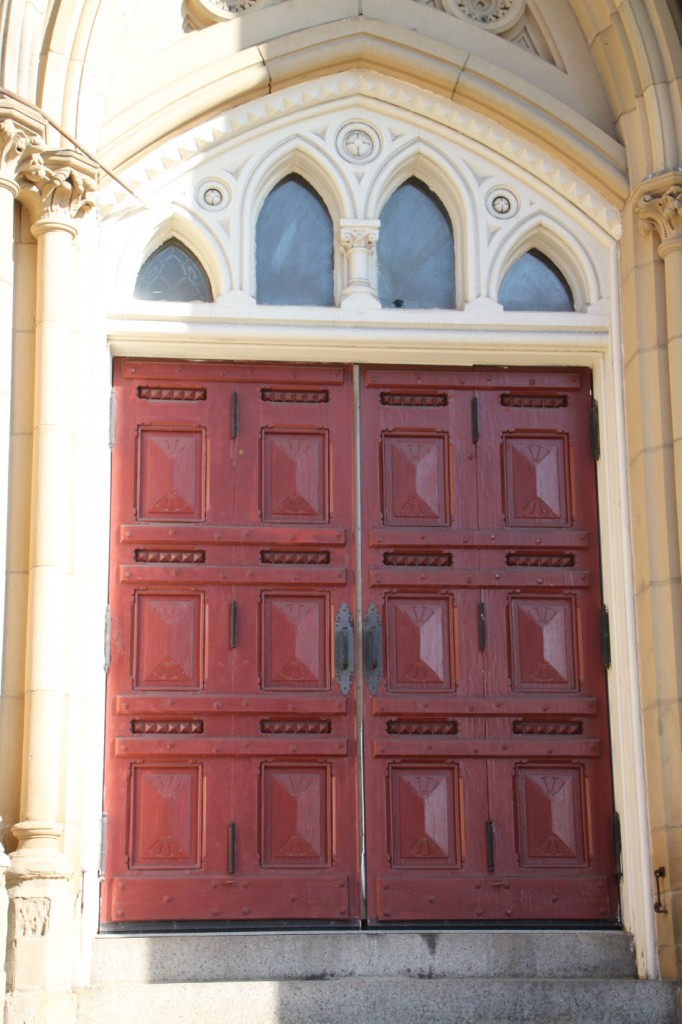
There were plenty of other cool doors at the cathedral. I was hoping that the closers were old L.C.Norton’s but the closers for the interior doors were old potbellies, still going strong.
Here is a close-up of one of the hinges in response to a comment left about how the doors may have been modified:
You need to login or register to bookmark/favorite this content.


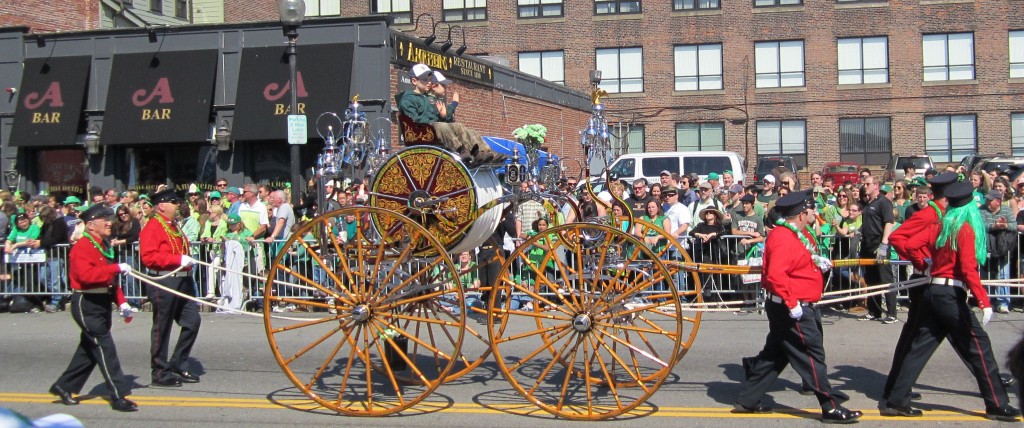

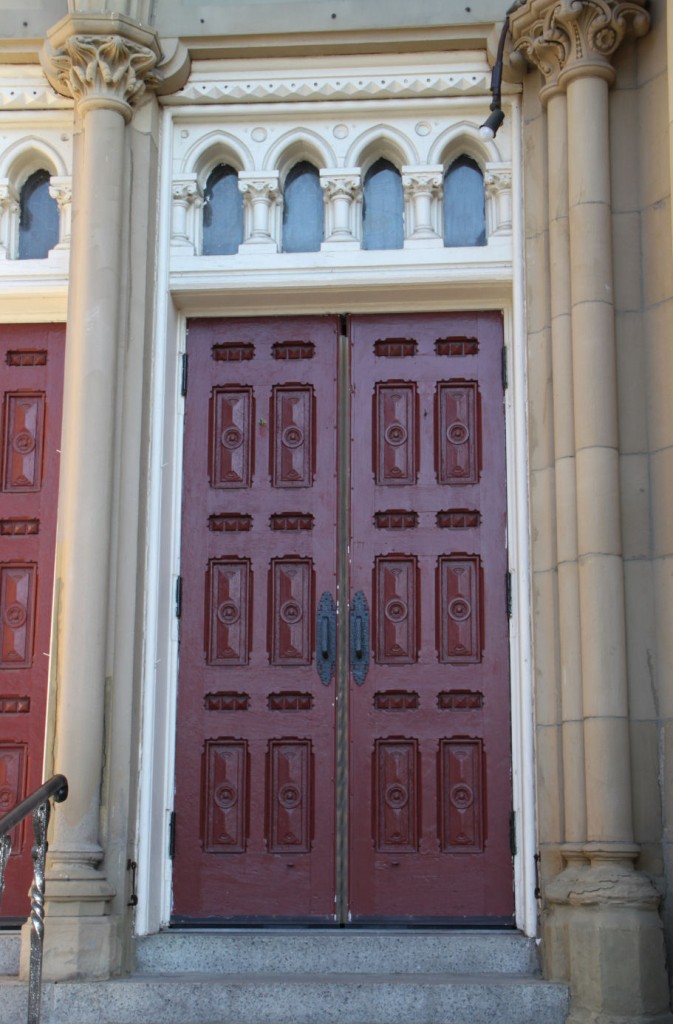
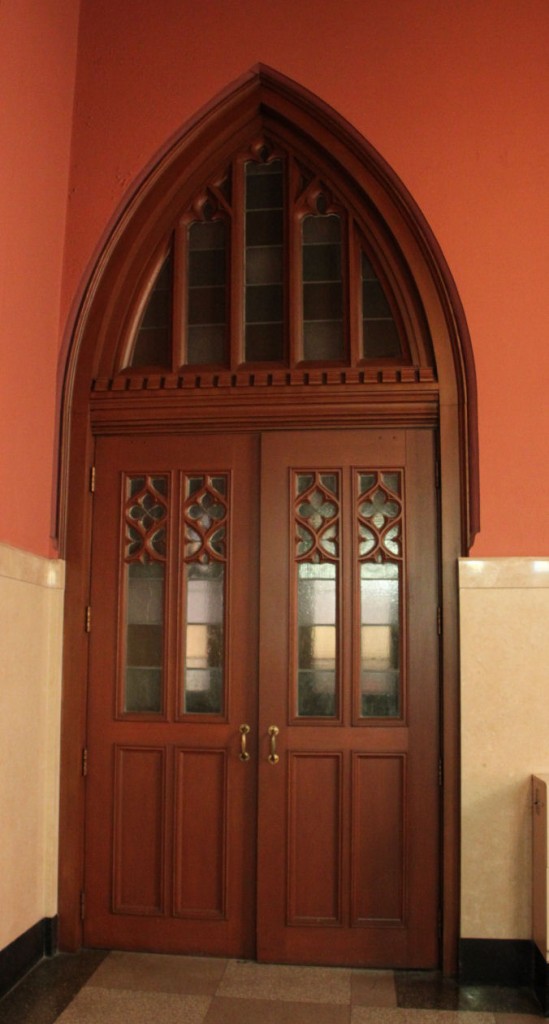

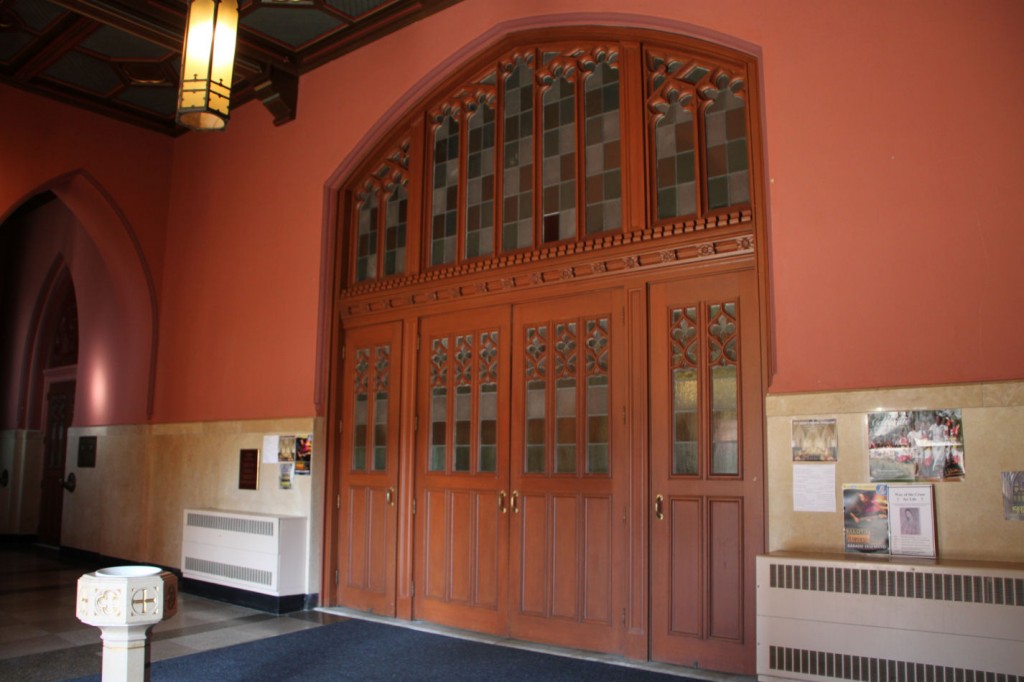
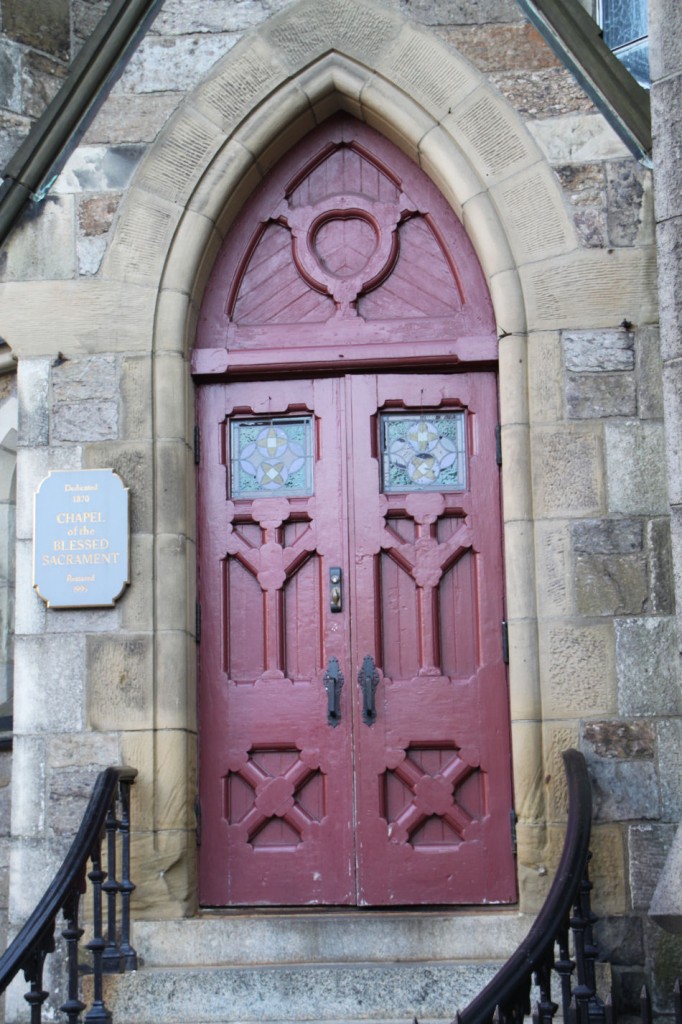
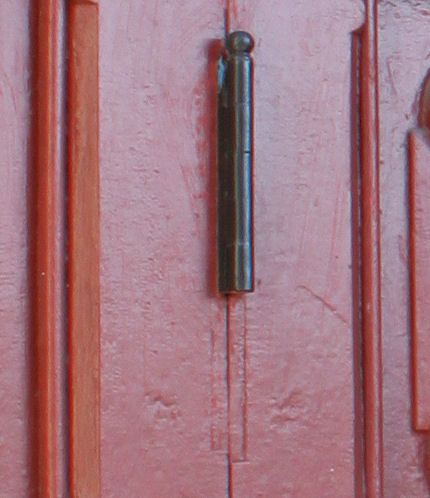




Nice! Did you happen to snap a close-up of the main hinges that were used to re-swing the main entry formerly-bifolded doors? Just curious how that was done, since they would’ve been inswinging when operating as bifold. Thanks for posting these! — TB
That’s a good question…I didn’t take a close-up of the hinge, but if the doors used to be inswinging then the frame stop on the head would have to have been added later. I don’t think they were bifolds with a track. I think the doors were just hinged together, but you’re right – either the sets of hinges at the jamb or the sets in between the leaves must have been swapped, because there isn’t enough clearance behind the door to accommodate the thickness of two leaves. I’m suspicious that it may have been the hinges between the leaves that were swapped, because there’s the shadow of a dutchman (or something) below those hinges. That’s a little odd too though, because the hinge prep should not have extended through to the face of the door, and why so thick? I will post a close-up in a minute so you can see what I mean. That theory would also make sense as far as the pull. The doors wouldn’t have been able to fold back on themselves because of the projection of the pull. Kinda makes you wonder why they didn’t just remove the hinges between the leaves and make the door one solid piece.
I think I should organize a Doors of Boston tour and we can all go around and look at these old doors. Wouldn’t that be fun? 😀
Just a note to let you know that I provided the exit devices and door closers that you see and it was not 1875 as mentioned.
I know better than to suggest that you were supplying hardware in 1875, which is when the building was originally built. 😀
As you and I discussed, the new hardware was added around 1995.